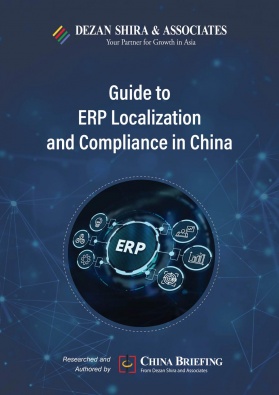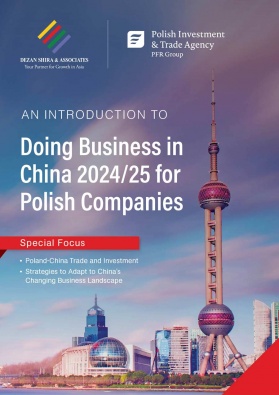China’s Economy in October 2024: Retail Gains, Industrial Slowdown, and Exports Surge
China’s economy in October 2024 showed mixed signals, with retail sales surging 4.8 percent and exports rising sharply, while industrial output slowed, and the property sector remained weak. Analysts anticipate further stimulus to sustain growth amid global uncertainties and domestic challenges.
The National Bureau of Statistics (NBS) has released the trade and economic data for October 2024, reflecting a mixed economic outlook. Retail sales surged 4.8 percent, the highest since February 2024, buoyed by holiday spending and Singles’ Day promotions. However, industrial output growth slowed to 5.3 percent, missing expectations, and the property sector remains sluggish despite recent policy measures.
Amid this backdrop, economists highlight the challenges of sustaining growth, particularly with rising global uncertainties. The return of Donald Trump as President-elect of the United States, who has threatened significant tariffs on Chinese imports, poses a potential headwind for China’s trade-dependent sectors.
In response, analysts anticipate further stimulus measures, including fiscal expansion and interest rate cuts, to counteract cyclical pressures.
China’s economy in October 2024 at a glance:
- GDP: around 4.8% year-on-year (YoY), for the first three quarters of 2024
- Value added of industrial enterprises above the designated size*: +5.3% YoY
- Value added of services: +6.3% YoY
- Total retail sales of consumer goods: RMB 4.54 trillion (US$627.56 billion), +4.8% YoY, +1.6% from September
- Total import and export: In dollar terms, US$522.4 billion, with exports +12.7% YoY and imports -2.3% YoY
- Fixed asset investment: +3.4% YoY, for the period from January to October
- Disposable income per capita: RMB 30,941 (US$2,907); +5.2% YoY, from January to September
- Unemployment rate: 5.0%; -0.1% from September
- CPI: +0.3% YoY
*Added value of companies with an annual main business income of over RMB 20 million (US$2.8 million)
Industrial growth slows amid mixed sector performance
In October 2024, China’s industrial value added (IVA) grew by 5.3 percent YoY, a slight slowdown from the 5.4 percent increase recorded in September. This marks a modest deceleration, reflecting a mixed performance across key industries and economic segments.
The IVA of manufacturing rose by 5.4 percent YoY, matching the growth rate of the power, heat, gas, and water production and supply sector. The mining industry expanded at a slower pace of 4.6 percent YoY. However, the equipment manufacturing sector and high-tech manufacturing outpaced overall growth, increasing by 6.6 percent and 9.4 percent YoY, respectively, highlighting the resilience of advanced manufacturing sectors.
Notable product categories recorded impressive output growth in October:
- New energy vehicles: +48.6%
- Industrial robots: +33.4%
- Integrated circuits: +11.8%
From January to October, the IVA grew by 5.8 percent YoY, consistent with the year-to-date growth rate as of September. This stability underscores the gradual recovery of industrial activity despite ongoing external and domestic challenges.
Breaking down growth by ownership, private enterprises outperformed others with a 4.8 percent YoY increase, while state-owned enterprises grew by 3.8 percent. Enterprises with foreign investment or investment from Hong Kong, Macao, and Taiwan reported a more modest growth of 2.9 percent.
On the demand side, sentiment improved in October, with the manufacturing Purchasing Managers’ Index (PMI) rising to 50.1 percent, up by 0.3 percentage points from September. The business activity expectations index also climbed to 54.0 percent, signaling stronger confidence in future production and operations.
As policymakers aim to balance recovery and structural adjustments, the strong performance of high-tech and green industries offers hope for sustained momentum in China’s industrial sector.
Services sector expands in October
In October, China’s services production index grew by 6.3 percent YoY, accelerating by 1.2 percentage points compared to September. The robust growth highlights a significant recovery in the sector, with modern service industries leading the way.
Several service industries recorded the following growth rates in October:
- Financial services: +10.2%
- Information transmission, software, and IT services: +9.5%
- Leasing and business services: +8.8%
From January to October, the services production index increased by 5.0 percent YoY, up by 0.1 percentage points from the year-to-date growth reported in September. During the first nine months of the year, revenue from service enterprises above designated size rose by 7.2 percent YoY, reflecting continued expansion in the sector.
The business sentiment also improved, as indicated by the services business activity index, which rose to 50.1 percent in October, up by 0.2 percentage points from September. Furthermore, the business activity expectations index climbed to 56.2 percent, a 1.6 percentage point increase, signaling strong optimism for future growth.
Key industries such as rail, water, and air transportation, postal services, capital market services, and ecological protection and public facility management demonstrated particularly high levels of activity, with business activity indexes exceeding 55.0 percent.
Retail sales growth outpaces forecasts, boosted by stimulus measures
In October, China’s retail sales surged by 4.8 percent year-on-year, surpassing the 3.8 percent growth forecasted in a Reuters poll and marking an improvement from September’s 3.2 percent increase. This stronger-than-expected performance highlights the initial impact of the measures on bolstering consumer demand.
From January to October, total retail sales amounted to RMB 39.90 trillion (US$5.46 trillion), up 3.5 percent year-on-year, with growth accelerating by 0.2 percentage points from the January-September period.
Meanwhile, in October:
- Urban retail sales: +4.7% YoY, reaching RMB 3.93 trillion (US$537.79 billion).
- Rural retail sales: +4.9% YoY, totaling RMB 614.1 billion (US$84.13 billion).
- Merchandise retail sales: +5% YoY, amounting to RMB 4.04 trillion (US$553.32 billion).
- Dining revenue: +3.2% YoY, reaching RMB 495.2 billion (US$67.83 billion).
In the same month, key consumer categories demonstrated strong growth, driven by consumtion upgrade and the “old-for-new” replacement policy:
- Cosmetics: +40.1% YoY
- Sports and entertainment products: +26.7% YoY
- Household appliances and audiovisual equipment: +39.2% YoY
- Cultural and office supplies: +18.0% YoY
- Furniture: +7.4% YoY
- Automobiles: +3.7% YoY
Online retail sales remained a key growth driver, reaching RMB 12.36 trillion (US$1.69 trillion) from January to October, up 8.8 percent year-on-year. Of this, online sales of physical goods contributed RMB 10.33 trillion (US$1.41 trillion), an 8.3 percent increase, accounting for 25.9 percent of total retail sales.
Retail sales of services also showed robust growth, increasing by 6.5 percent year-on-year during the same period, reflecting the continued shift towards online and experience-based consumption.
The NBS credited the retail sector’s improved performance to the “acceleration” of policy implementation and recent economic measures aimed at boosting confidence and consumption.
Exports surge, imports drop drastically
China’s foreign trade witnessed a significant boost in October, with total exports rising by 12.7 percent year-on-year to US$309.06 billion — the fastest growth in 19 months. This marks a sharp acceleration from the 2.4 percent growth in September. The robust export performance surpassed analysts’ expectations, which had predicted a more modest 5.2 percent growth.
Imports, on the other hand, declined by 2.3 percent year-on-year to US$213.8 billion, falling short of market expectations for a 1.5 percent drop. This contrasts with modest growth recorded in September and highlights the ongoing weakness in domestic demand.
Exports to key trading partners showed mixed results. In October, shipments to the U.S. rose by 8.1 percent, while exports to the European Union and ASEAN grew by 12.7 percent and 15.8 percent, respectively, according to CNBC calculations based on official data. Notably, exports to Russia surged by nearly 27 percent.
However, according to the same source, imports from all of the above regions generally declined, reflecting weaker domestic consumption.
China’s export surge was driven by improved weather conditions, seasonal demand leading up to the holiday season, and price discounts aimed at maintaining market share. Exports of vehicles, a key sector, rose by 11 percent year-on-year.
Despite the challenges of a prolonged property crisis and weakening domestic consumption, China’s export sector remains a critical growth engine. However, the reliance on external demand raises concerns amid growing trade tensions with the US and Europe, which could weigh on export performance in 2025.
Fixed asset investment stabilizes amid policy support
In the first ten months of 2024, China’s fixed asset investment (FAI) reached RMB 42.32 trillion (US$5.88 trillion), marking a 3.4 percent year-on-year increase. The growth rate remained steady for three consecutive months, reflecting stabilization amid the government’s supportive policies.
Excluding the property sector, FAI expanded by 7.6 percent year-on-year during the January-October period, while investment in property development declined by 10.3 percent year-on-year.
Breaking down the investment by sector:
- Infrastructure investment: Grew by 4.3 percent year-on-year, with an acceleration from earlier months.
- Manufacturing investment: Increased by 9.3 percent year-on-year, showing robust performance.
Investment in high-tech industries continued to demonstrate strong momentum, rising 9.3 percent year-on-year. Within this category:
- Investment in high-tech manufacturing grew by 8.8 percent year-on-year; and
- Investment in high-tech services increased by 10.6 percent year-on-year.
The stabilization of FAI coincided with stronger signs of broader economic recovery, as seen in the retail sales sector. These indicators reflect the improving impact of China’s broader policy measures to stimulate economic activity and enhance market confidence.
China’s economy in October 2024: Recovery momentum amid persistent challenges
According to the National Development and Reform Commission (NDRC), China’s economy is expected to sustain its recovery momentum in November and December, supported by robust policy measures and an uptick in business confidence. The commission cited improved investment and production activity, alongside rising market expectations, as signs of resilience. With GDP growth reaching 4.8 percent in the first three quarters of 2024, the government remains focused on achieving its full-year target of around 5 percent and leveraging untapped growth drivers like urbanization and green industries.
However, external analyses, including a Reuters poll, paint a more cautious picture. Economists forecast that China may fall short of its 5 percent target for 2024, projecting annual growth of 4.8 percent, with pressures stemming from deflationary risks and a prolonged property market crisis. While stimulus measures have bolstered short-term activity, their impact on long-term growth remains uncertain.
Looking ahead, analysts anticipate further monetary easing and fiscal measures to sustain momentum into 2025, as policymakers navigate a complex economic landscape marked by both opportunities and persistent challenges.
About Us
China Briefing is one of five regional Asia Briefing publications, supported by Dezan Shira & Associates. For a complimentary subscription to China Briefing’s content products, please click here.
Dezan Shira & Associates assists foreign investors into China and has done so since 1992 through offices in Beijing, Tianjin, Dalian, Qingdao, Shanghai, Hangzhou, Ningbo, Suzhou, Guangzhou, Haikou, Zhongshan, Shenzhen, and Hong Kong. We also have offices in Vietnam, Indonesia, Singapore, United States, Germany, Italy, India, and Dubai (UAE) and partner firms assisting foreign investors in The Philippines, Malaysia, Thailand, Bangladesh, and Australia. For assistance in China, please contact the firm at china@dezshira.com or visit our website at www.dezshira.com.
- Previous Article Italia, Cina – Nuovo DTA in vigore dal 2025: principali cambiamenti e implicazioni
- Next Article Tax Digitalization in China: Impact on Corporate Tax Risk Management


























